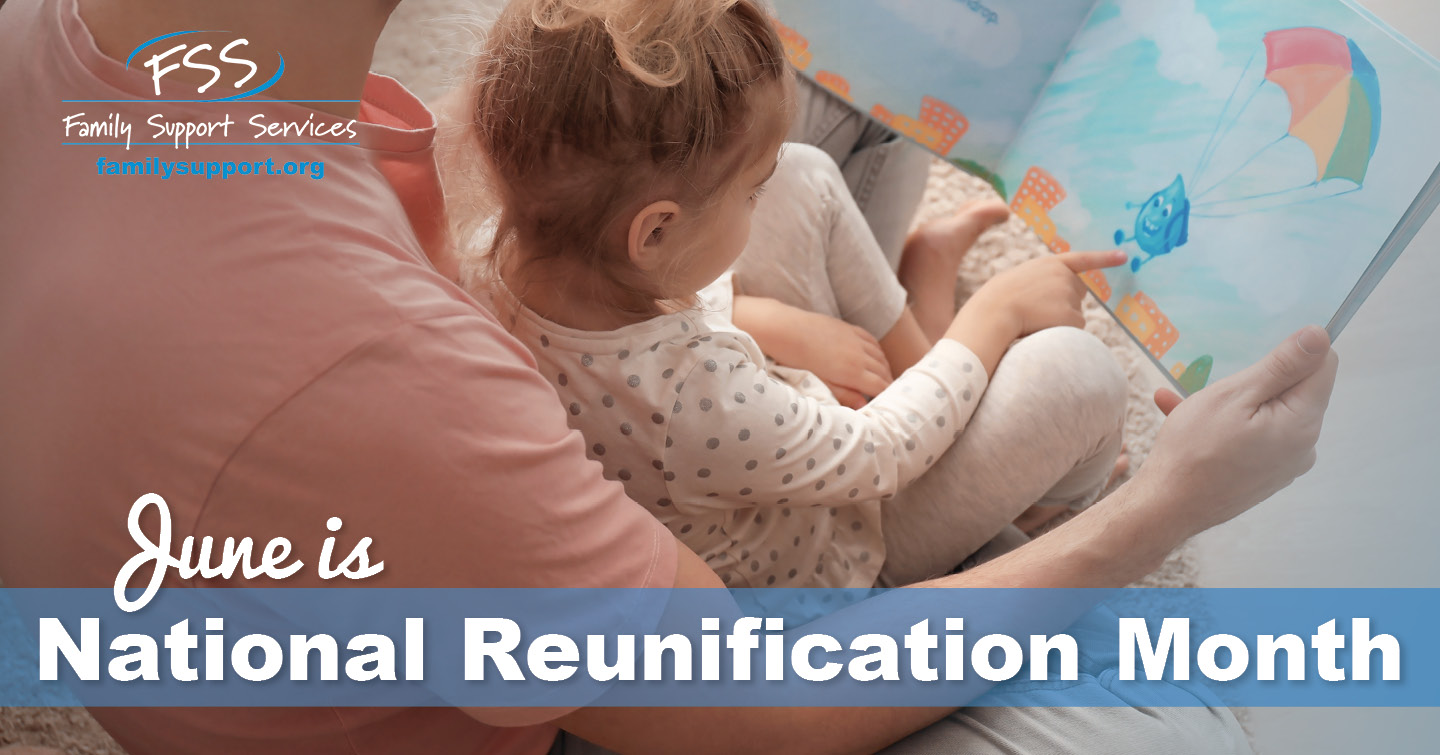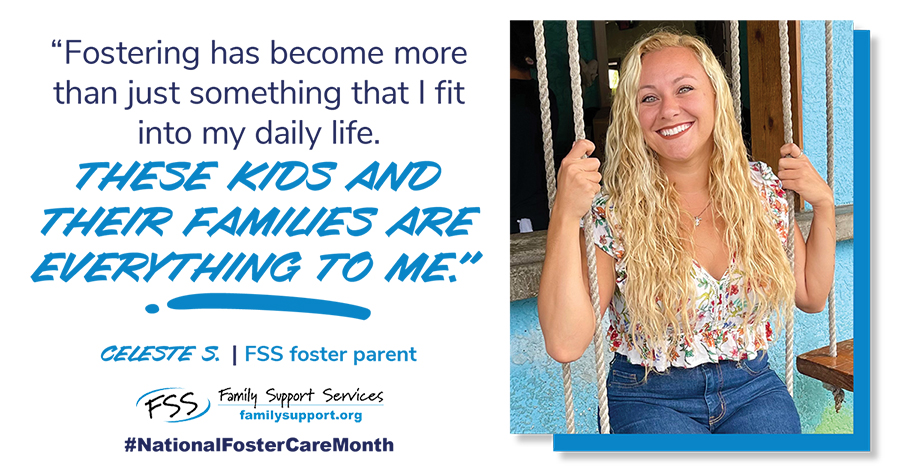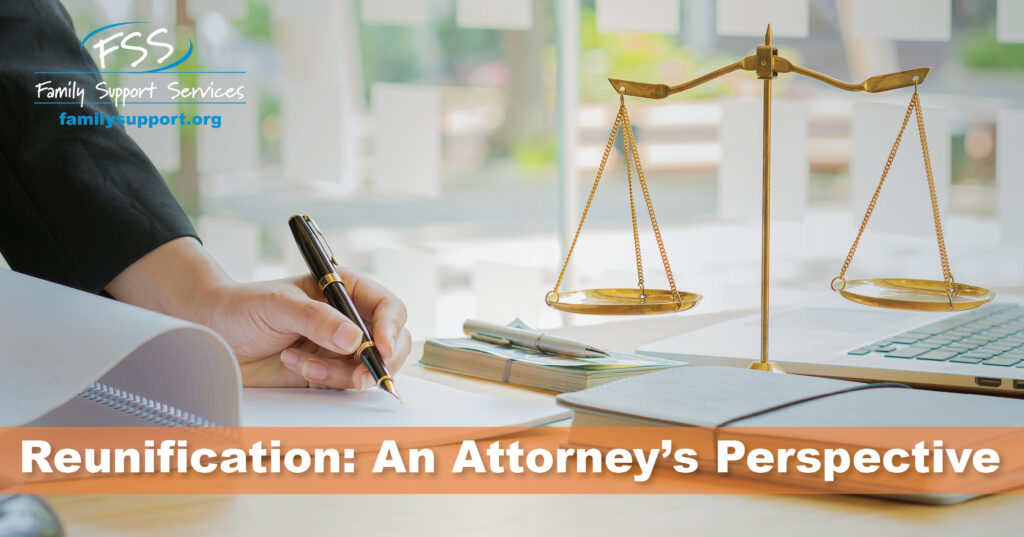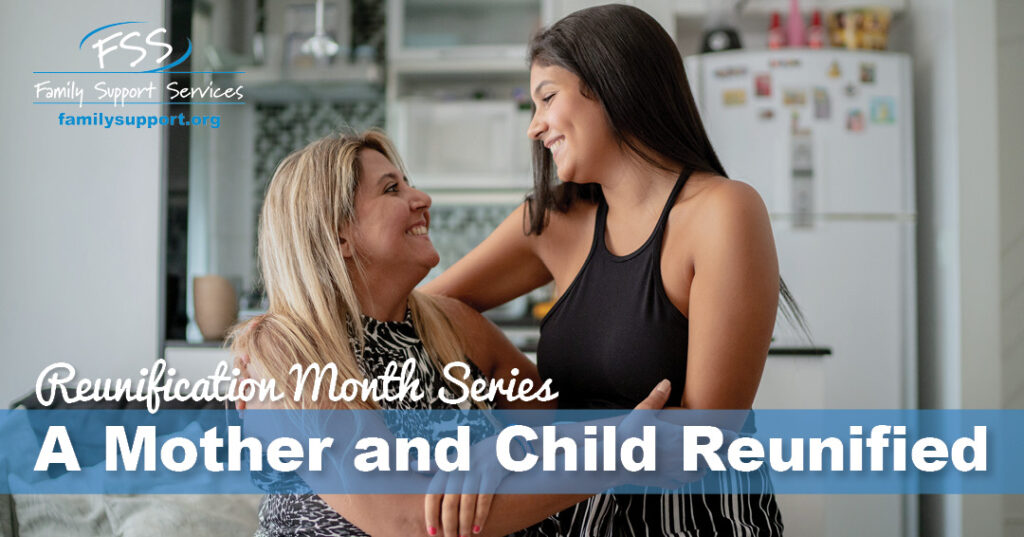Every June, as a nation, we recognize the achievements of parents and communities who work tirelessly to reunify families. This feat can feel insurmountable at the beginning of the journey. When finally achieved, a brighter future awaits families, and in turn builds a stronger community.
Reunification is a Success Story
To create this success story, an intricate network of people who are involved have the same goal. This network is made up of advocates from varying agencies: foster parents, child welfare case managers, advocate agencies, local government, local court systems and various support services who strive to help rectify whatever initiated removal of a child from their home. All are dedicated to helping a parent achieve set goals to reunify with their child or children. The parent and child are surrounded by support every step of the way.
Benefits of Reunification
Children do best when raised in a stable family setting, which can support positive effects on their cognitive, behavioral, and health outcomes. Additionally, reducing the number of children in out-of-home care can reduce the costs for state and local agencies and redirect funds to other areas of the child welfare system. Some benefits of reunification include:
- Stability and security – Fewer changes to home environments creates stability and security for children.
- Parents’ opportunity to improve – The reunification journey sets goals for parents to gain healthy behaviors to be better caregivers.
- Less stress – Familiar surroundings and routines for children reduce stress and builds confidence.
- Bonds to extended family – Reunification brings the child back to extended family and the culture that exists within it.
- Brighter future – Too many changes in a child’s life creates anxiety. Parents who have built healthy behaviors to bring the family together again, creates a sturdy foundation for children to flourish socially and academically.
Why Reunification is the Goal of Foster Parenting
Significant research has shown that reunifying families is a fundamental component of a child’s well-being in most cases. To ensure the well-being of a child is to make every effort to reduce trauma. It has been well established through studies that separating children from their parents results in negative consequences.
The percentage of children reunifying with their families varies by community and dependent on year. The most recent data for Florida shows that in 2021, 44.5% of children exiting foster care were reunified. This is the highest percentage of the type of exit.
For FSS Pasco & Pinellas Counties, more children exited the system this past year than entered it, a positive change for this circuit. Other results from this past year:
- In 2022, there were 404 fewer children who entered out-of-home care because of abuse or neglect than had entered out-of-home care in 2021. This represents a 28% reduction in child removals this calendar year.
- In 2022, more than 500 children achieved permanency through reunification. Overall, 47% of children who achieved permanency this year were due to reunification, an increase from 43% the year prior.
Connection to what matters most
Family Support Services focuses on unifying families, keeping kids connected to their roots and providing quality foster parents. Our mission could not be achieved without our foster parents.
Yes, there are challenges in reunification. Myths abound about parents who have had their children put in out-of-home care – negative stories told over and over again until they are believed to be true for all. We intend to dispel these myths. FSS has talented, passionate, dedicated staff and community partners who feel the same way.
There is a phrase often heard about people in our lives at one time or another: “They’ll never change.” Take a moment and think about it: Can you say that you’ve never changed?
“Everyone needs a little help. I would never want to be judged for what I have done wrong. But I would love to have support and guidance to change my life over again.” – Foster Mom
You can impact a child’s life by fostering. Click here to learn more.
References:
- Stable family settings supports positive effects: https://pubmed.ncbi.nlm.nih.gov/20964133/
- Data site: Child welfare outcomes – Florida (hhs.gov)








0 Comments